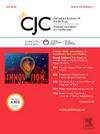NDRG1 Regulates Iron Metabolism and Inhibits Pathologic Cardiac Hypertrophy
IF 5.8
2区 医学
Q1 CARDIAC & CARDIOVASCULAR SYSTEMS
引用次数: 0
Abstract
Background
Cardiac pathologic hypertrophy, a pathologic physiological alteration in many cardiovascular diseases, can progress to heart failure. The cellular biology underlying myocardial hypertrophy remains to be fully elucidated. Although N-myc downstream-regulated gene 1 (NDRG1) has been reported to participate in cellular proliferation, differentiation, and cellular stress responses, its role in cardiac diseases remains unexplored. Here, we investigated the role of NDRG1 in pathologic hypertrophy.
Method
Cardiomyocyte-specific NDRG1 knockout (KO) transgenic mice and NDRG1-AAV9 were used in mice. Angiotensin II (AngII) stimulation was applied to induce hypertrophy. Histologic, molecular, and RNA-sequencing analyses were performed, and ferroptosis markers and iron levels were studied. We used co-immunoprecipitation (Co-IP) and application of iron chelator to further studied the mechanisms of NDRG1 in cardiac hypertrophy.
Results
We found that NDRG1 expression is decreased in pathologic hypertrophy induced by AngII stimulation. Conditional KO of NDRG1 in mouse cardiomyocytes led to progressive cardiac hypertrophy and heart failure. Cardiomyocyte-specific overexpression of NDRG1 via AAV9 significantly reversed AngII-induced ventricular hypertrophy and fibrosis. Mechanistically, NDRG1-deficient cardiomyocytes exhibited iron overload and increased ferroptosis, accompanied by elevated levels of reactive oxygen species (ROS) and lipid peroxidation. Subsequently, we confirmed the involvement of NDRG1 in regulating ferroptosis and iron metabolism in myocardial cells. Finally, we identified an interaction between NDRG1 and transferrin in cells. The iron chelator Dp44mT effectively reduced myocardial iron overload and ventricular remodelling induced by NDRG1 deficiency.
Conclusions
These findings highlight critical role of NDRG1 in iron metabolism and ferroptosis in cardiomyocytes, suggesting that NDRG1 or iron metabolism may serve as therapeutic targets for cardiac hypertrophy.

NDRG1 可调节铁代谢,抑制病理性心肌肥大。
背景:心肌病理性肥厚是许多心血管疾病的病理生理改变,可发展为心力衰竭。心肌肥厚的细胞生物学基础仍有待全面阐明。虽然有报道称 NDRG1 参与细胞增殖、分化和细胞应激反应,但它在心脏疾病中的作用仍未得到探讨。在此,我们研究了 NDRG1 在病理性肥厚中的作用:方法:使用心肌细胞特异性-NDRG1基因敲除(KO)转基因小鼠和NDRG1-AAV9小鼠。应用血管紧张素 II(AngII)刺激诱导肥大。我们对小鼠进行了组织学、分子和 RNA 序列分析,并研究了铁变态反应标记物和铁水平。我们使用了co-IP和铁螯合剂来进一步研究NDRG1在心肌肥大中的作用机制:结果:我们发现,NDRG1在AngII刺激诱导的病理性肥厚中表达减少。在小鼠心肌细胞中条件敲除 NDRG1 会导致进行性心肌肥厚和心力衰竭。通过 AAV9 在心肌细胞特异性过表达 NDRG1 能显著逆转 AngII 诱导的心室肥厚和纤维化。从机理上讲,NDRG1缺陷的心肌细胞表现出铁超载和铁变态反应增加,同时伴有活性氧(ROS)和脂质过氧化水平升高。随后,我们证实了 NDRG1 参与调控心肌细胞的铁蛋白沉积和铁代谢。最后,我们确定了 NDRG1 与细胞中转铁蛋白之间的相互作用。铁螯合剂Dp44mT能有效减轻NDRG1缺乏引起的心肌铁负荷过重和心室重构:这些发现强调了 NDRG1 在心肌细胞铁代谢和铁变态反应中的关键作用,表明 NDRG1 或铁代谢可作为心肌肥厚的治疗靶点。
本文章由计算机程序翻译,如有差异,请以英文原文为准。
求助全文
约1分钟内获得全文
求助全文
来源期刊

Canadian Journal of Cardiology
医学-心血管系统
CiteScore
9.20
自引率
8.10%
发文量
546
审稿时长
32 days
期刊介绍:
The Canadian Journal of Cardiology (CJC) is the official journal of the Canadian Cardiovascular Society (CCS). The CJC is a vehicle for the international dissemination of new knowledge in cardiology and cardiovascular science, particularly serving as the major venue for Canadian cardiovascular medicine.
 求助内容:
求助内容: 应助结果提醒方式:
应助结果提醒方式:


